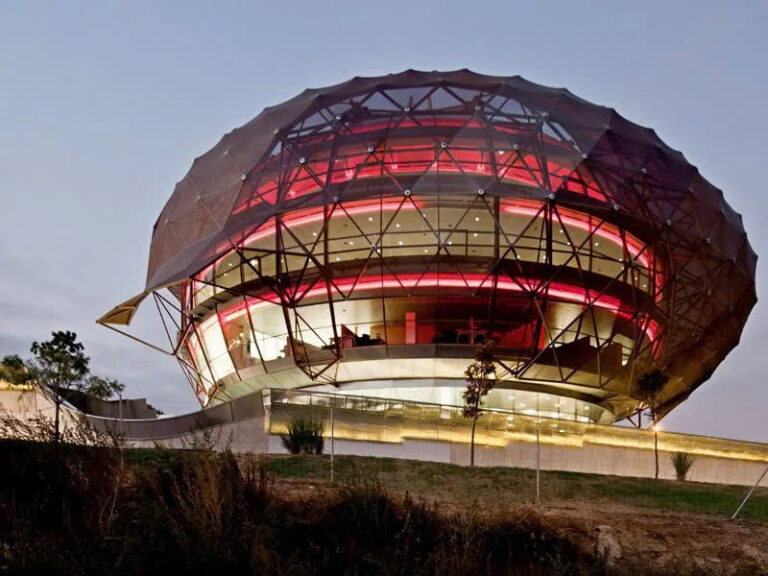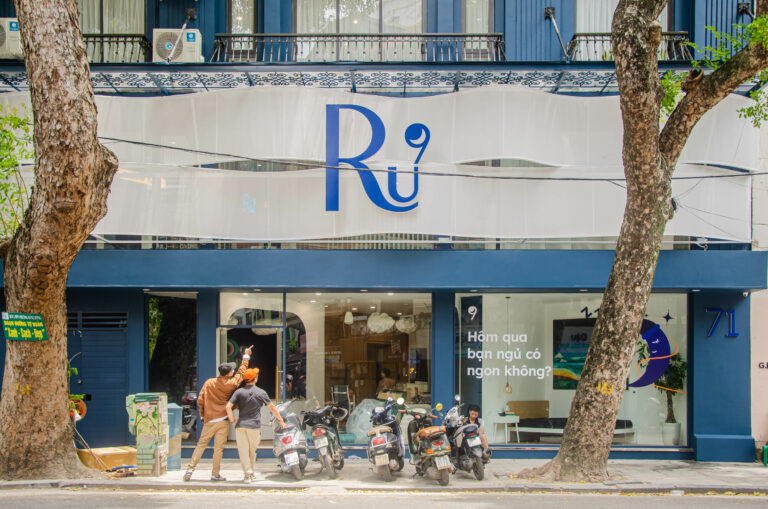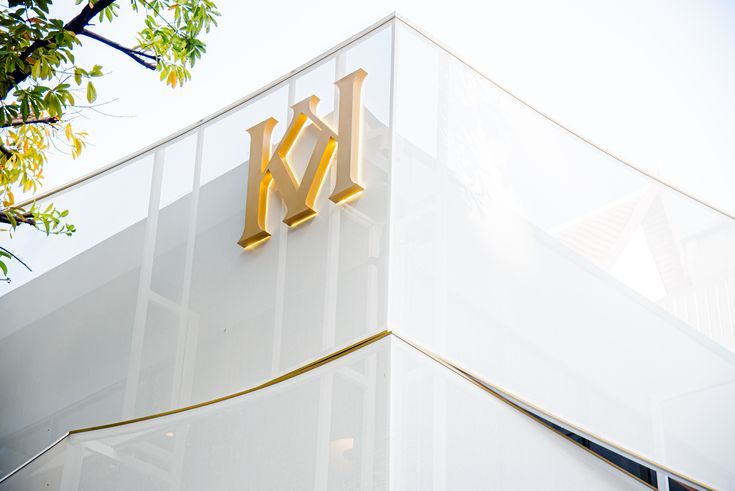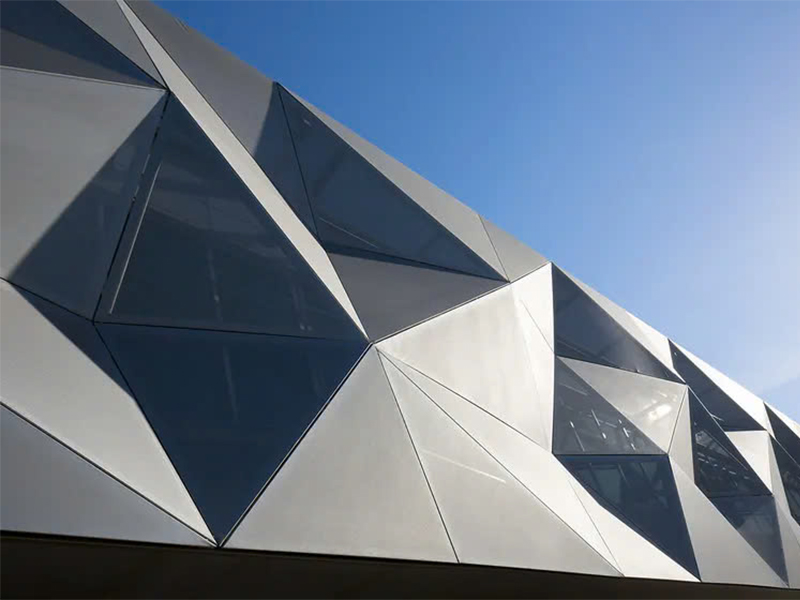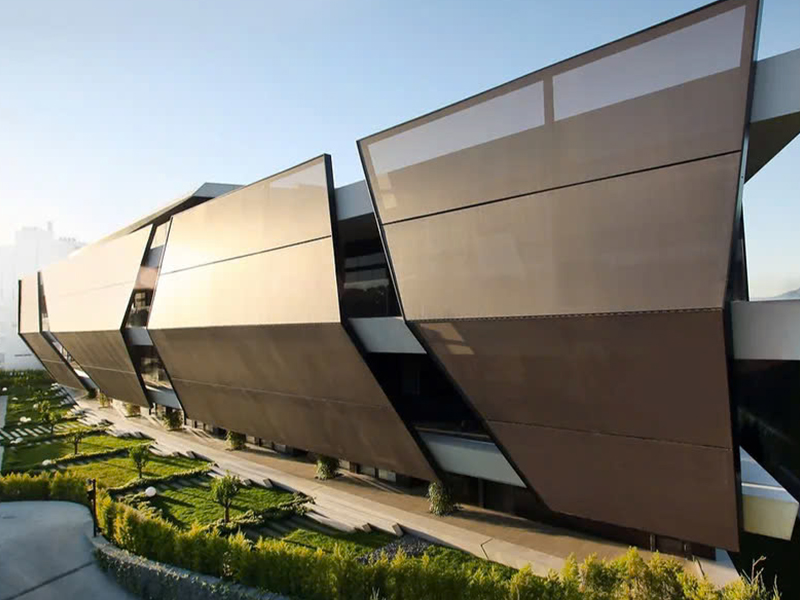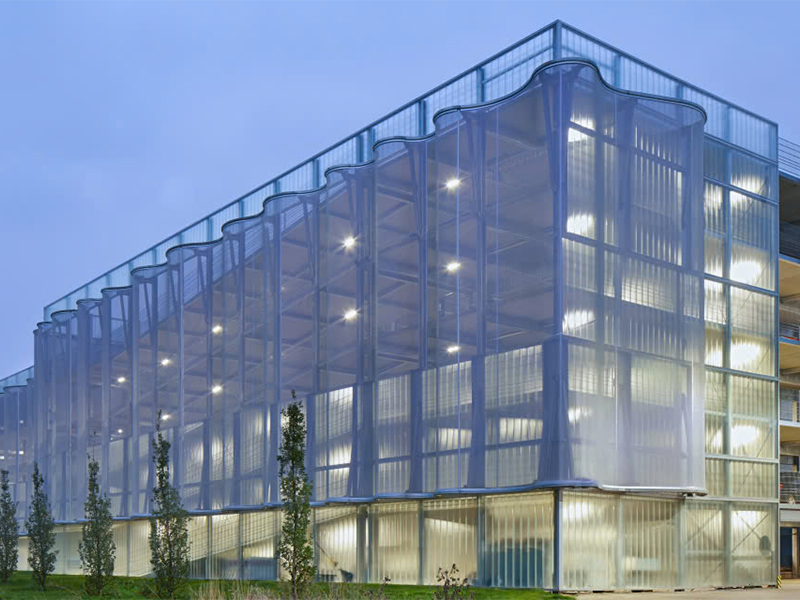Current Situation and Solution: Fabric Facade Design – Enhancing Flexibility in Modern Architecture
Fabric Facade design, also known as Fabric Facade Architecture, is not only a conventional facade solution but also offers outstanding design possibilities thanks to the flexibility of high-tech fabric materials. With its easy-to-bend properties, the ability to customize colors, patterns, and the potential for 3D shaping, Fabric Facade design opens up countless creative opportunities for architects. This solution is suitable for all architectural styles, from modern, minimalist to complex artistic designs, highlighting the building with unique and iconic beauty.
Technical Requirements & Context Analysis
In the context of contemporary architecture, the demand for differentiation and personalization is increasingly emphasized. Traditional facade solutions often have limitations in terms of the ability to create complex shapes, customize colors, or integrate interactive elements. This requires a material that can break down barriers in form and aesthetics, while still ensuring technical factors such as durability, load-bearing capacity, and energy efficiency. Fabric Facade design appears as a comprehensive solution, meeting the unlimited creative needs and strict technical standards of the architectural industry.
Technical Solutions and Implementation Process
Fabric Facade design solutions are realized through the combination of advanced materials and professional design and construction processes.
Technical Specifications and Formability
Fabric Facade design possesses many outstanding technical features, helping architects easily realize creative ideas:
- Flexible Materials: Use specialized stretch fabrics such as PTFE (Polytetrafluoroethylene), PVC/PES PVDF (Polyvinyl Chloride/Polyester with Polyvinylidene Fluoride Coating), or ETFE (Ethylene Tetrafluoroethylene). These materials are soft but have high tensile strength, allowing for the creation of structures from flat to curved, wavy or spiral with ease.
- Custom colors and patterns: Fabrics can be dyed or printed with custom patterns using advanced digital printing technology. This makes the project unique and iconic, suitable for brand identity or artistic intention.
- LED lighting integration capability: With its translucent and interactive capabilities, Fabric Facade can be integrated with LED lighting systems from within, creating dynamic visual effects, turning the building into a brilliant highlight at night.
- 3D and artistic creation: Thanks to the elastic fabric material and flexible structural frame, the Fabric Facade design allows architects to create unique three-dimensional shapes, from soft curves to complex shapes, bringing high artistic value to the project.
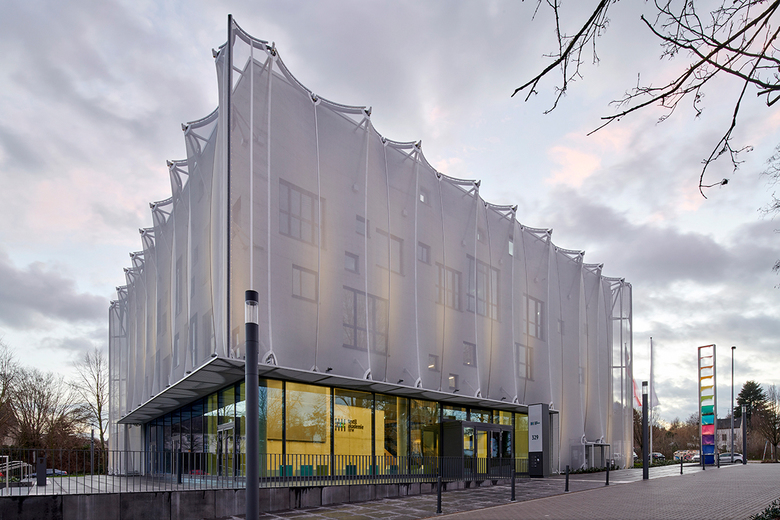
Design Implementation Process
The Fabric Facade design implementation process is carried out according to the following technical steps:
- Concept and Morphological Analysis: Sketch design ideas, analyze fabric formability and propose suitable structural solutions.
- Engineering Simulation and Analysis: Use 3D structural design and analysis software (e.g. Rhino, Grasshopper, SAP2000) to simulate shape, analyze stress and loads (wind, snow), ensure system stability and safety.
- Precision Fabrication: Fabric panels are cut and welded using advanced technology at the factory, ensuring high precision according to the design shape. The support frame system (stainless steel or aluminum) is also prefabricated.
- Installation and Alignment: The components are transported to the construction site and installed. The fabric alignment process is carefully performed to ensure flat surfaces, uniform tension and retention of the design shape.
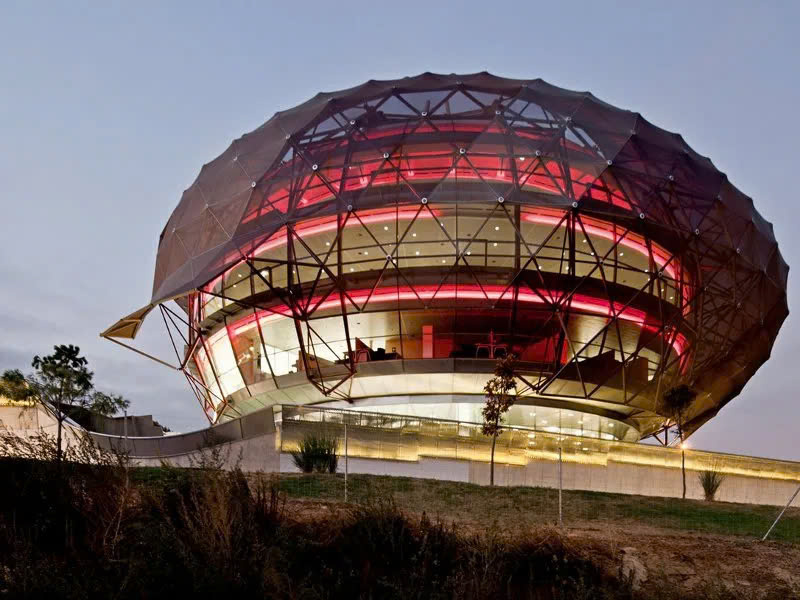
Results and Performance Evaluation
The application of Fabric Facade design brings many significant results and benefits:
- Unique and impressive aesthetics: Unlimited shaping capabilities help buildings become architectural icons, attract attention and enhance brand value.
- Suitable for all architectural styles: From minimalist, modern designs to complex geometric structures, Fabric Facade can be customized to create harmony or architectural accents.
- Economic efficiency in complex design: Compared to traditional materials, complex shaping with Fabric Facade is often less expensive due to its light weight, ease of fabrication and installation.
- Enhance brand value and experience: Commercial buildings using Fabric Facade design often attract attention, create unique experiences for customers and contribute to effective image promotion.
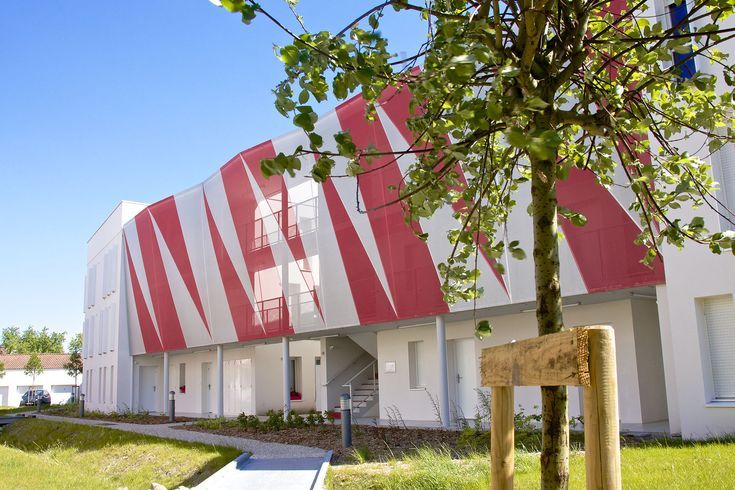
Contact Technical Consulting
Flexiiform is a professional unit in the field of consulting, designing, and constructing Fabric Facade solutions. With extensive experience and a team of highly specialized engineers, we are committed to providing creative, unique Fabric Facade design solutions, and meeting all strict technical requirements of the project.
To receive in-depth advice on Fabric Facade design solutions and their applicability to your project, please contact:
Flexiiform Company Limited
Website: https://flexiiform.vn/
Phone: 0867 868 830
Email: [email protected]


